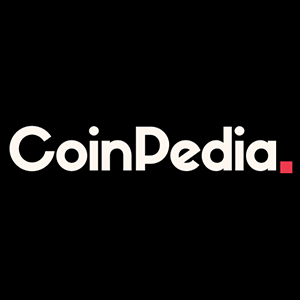YBTC Might Be The Best Bitcoin Covered Call Fund
7 min read
Summary YBTC outperforms peers, capturing 80% of Bitcoin’s upside and delivering a 40% yield, while maintaining stable NAV through disciplined distributions. Active management and flexible covered call strategies—mixing weekly and monthly options—enable the Fund to adapt to Bitcoin’s volatility and maximize returns. Roundhill Bitcoin Covered Call Strategy ETF’s performance is still closely tied to Bitcoin’s direction; it softens losses in downturns but will decline if Bitcoin enters a bear market. YBTC is best suited for investors bullish or neutral on Bitcoin; I own it for diversification but recommend only a modest allocation due to inherent volatility. Introduction and Performance Overview Roundhill Bitcoin Covered Call Strategy ETF ( YBTC ) is a covered call fund that focuses specifically on Bitcoin ( BTC-USD ). This is certainly not the only Bitcoin based covered call fund out there, but it seems to be the best performing one so far and capturing the most upside from Bitcoin. Since April, Bitcoin itself is up 40.59% while this fund is up 32% in total returns, indicating that it was able to capture 80% of the upside. Some of this fund’s more popular competitors such as YieldMax Bitcoin fund ( YBIT ) and Grayscale Bitcoin Covered Call fund ( BTCC ) was able to generate total returns of 18% to 20% during the same time period, capturing only about half of Bitcoin’s rise. Data by YCharts Since inception, the fund’s share price has been virtually flat (dropping 0.02%) while its total return was an impressive 99.8%. Basically, all the fund’s returns came from distribution, but it’s amazing that the fund was able to preserve all of its NAV despite distributing a yield close to 100% during this time. Data by YCharts Unstable Payments but Stable NAV The fund has a 40% distribution yield, and it recently switched from monthly payments to weekly payments. The fund’s distributions are not very stable and can vary wildly from week to week depending on how much money the fund made from its options plays, and the long-term average comes out to an annualized 35% to 45% yield so far. On one side, the fund’s varying distributions make it difficult to have consistency and rely on stable income but on the other hand it provides investors with a stable NAV and stable share price because the fund only pays out the profits it made and not from NAV itself. We’ve seen so many funds bleed themselves half to death while paying out more than they make just to support high distribution rates, so I like that this fund isn’t doing that. YBTC Distributions From Last 12 Months (Roundhill) It’s Still a Bullish Bet on Bitcoin While considering the fund’s strong performance, keep in mind that Bitcoin itself has been performing very well lately. If Bitcoin’s performance were to go south, it is very possible that this fund’s performance would also suffer, so I wouldn’t count on the fund’s past performance to continue the same way forever considering that Bitcoin is a highly volatile asset. Earlier this year, Bitcoin went through a correction from mid-January to mid-April where its price declined by almost -30%. During the same period this fund declined by about -17% which means it was able to soften the blow by selling covered calls and collecting premiums, but it dropped regardless so if Bitcoin were to enter a prolonged bear market, this fund would also enter into one, although the effects might be a bit softer due to the premiums it’s been collecting. Data by YCharts What Sets This Fund Apart ? The big question is: How come this fund has been outperforming its peers by such a wide margin? After all, they all write covered calls, and there are only so many ways you can write covered calls. Sure, you can pick different strike prices and different time periods, but typically covered call funds tend to have similar performance metrics. This one seems to be doing much better than others, though. First of all, the fund is actively managed , so its managers analyze the situation every single week to determine what makes sense in terms of strike price and other variables such as expiration dates. They also decide which vehicles to use (Bitcoin futures vs ETFs) depending on a number of factors. So the fund’s strategy can be slightly different every week and every month depending on how bullish or bearish the fund’s managers feel about Bitcoin. For example, in March and April when Bitcoin had its 30% correction described above, the fund’s management saw this as a sign that Bitcoin was oversold and made their bet to the upside where they sold covered calls at strike prices significantly higher than the price at the time. This allowed them to capture more upside. Another factor is that since the fund doesn’t distribute more than it generates in profits, its stable NAV allows it to have maximum buying power, which allows it to take advantage and buy the dip when Bitcoin is on sale. Other funds might distribute too much and end up not having enough assets to buy the dip in a substantial manner in the same way this fund does. There is also the luck factor. It’s impossible to know where Bitcoin will go tomorrow, next week or next month. This is a highly volatile asset with no earnings, no dividends and no valuation metrics which means that its price is entirely set by sentiment which can easily change overnight as we’ve seen many times before. When it comes to Bitcoin, whether you are doing covered calls or just trading the asset itself, some part of your success will be dependent on luck. The thing with luck is that it doesn’t always stay in the same place though, and today’s lucky investors (trader) could be tomorrow’s unlucky investor (trader) and vice versa. Finally, the fund doesn’t limit itself to monthly options like many of its competition. Some funds only sell weekly options and others sell monthly options, but this fund uses a mix. Since it’s an actively managed fund, the managers of the fund decide which options are more appropriate to sell. At the moment the fund seems to have sold a bunch of weekly options expiring on July 18th, but this isn’t always the case. YBTC’s current holdings (Roundhill) There are cases where selling weekly options might be more profitable, and there are cases where selling monthly options would be more profitable. Weekly options have smaller premiums since they have less time until expiration, but typically the difference can be small. For example, one of the most commonly used Bitcoin ETFs is iShares Bitcoin Trust ETF ( IBIT ) and its current price is $66. If you wanted to write at-the-money weekly call options in this fund, you would get about $1.86 of premium in a typical week. For the same fund, if you wanted to write monthly at-the-money calls you would generate $3.45 which is about only twice the amount you’d get for a weekly even though there are 4.5 weeks in a month. On the other hand, if you are feeling bullish and trying to sell options that are out of money, monthly could be a better option. For example, if you sell weekly calls at a strike price of $71 (just $5 above the current price) you will get a weekly premium of 37 cents but if you sell the same option for a monthly expiration you will get about $1.53 which is almost 5 times the amount. Different Option Prices ( OptionProfitCalculator) So the manager of the fund will have to decide on not only strike prices but also expiration dates depending on how bullish or bearish they feel at the time. Many funds put constraints on their management about how they can sell covered calls, but this fund gives its management a lot of flexibility and freedom, and this might explain some of its performance. Conclusion So far, the fund’s flexible and active approach seems to be working very well. At the end of the day, whether you would want to buy and hold this fund depends on one thing: are you bullish or bearish on Bitcoin overall? If you think Bitcoin presents a great value and is here to stay for a very long time and that its current price represents a good entry point or at least if you have mixed feelings and feel neutral about it, I would also suggest you to buy YBTC. If you think Bitcoin itself is a huge bubble that’s about to burst and crash and burn, then I would also suggest you to stay away from YBTC. At the end of the day, this fund is a bet that Bitcoin will be somewhere between “stable” and “bullish” in the foreseeable future. Personally, I am not a huge fan of Bitcoin because it’s impossible to value it and its price is entirely driven by sentiment, but I am not bearish on it either, and I don’t see it as a bubble because I don’t know what proper value is for it. How can I tell something is overvalued or a bubble if I don’t even know how to value it and what its proper value should be? Having said that, I own YBTC because it gives me exposure to this asset, which helps my diversification goals. I wouldn’t put too much money into this fund, but I would put at least some.

Source: Seeking Alpha



